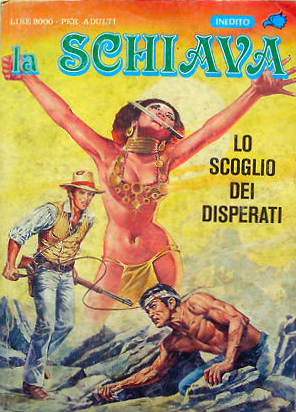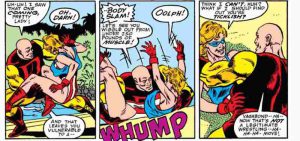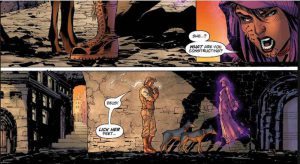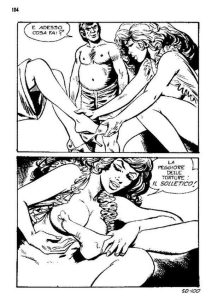In 1983, Ediperiodici di Cavedon deemed the time right to launch a blaxploitation series called La schiava (The Slave), which lasted for 52 issues. The series featured the young and attractive Zeudia, whose name was inspired by the beautiful actress who had become the archetype of black beauty in the Italian public’s eyes: Zeudi Araya.

Araya had risen to fame in 1972 with Luigi Scattini’s film “La ragazza della pelle di luna”.
In “La schiava”, Zeudia is transported in chains to 19th century Louisiana and accompanied by her loyal friend Toby. Zeudia must face the horrific slave traders and assorted riff-raff who take advantage of her in every way possible, but she never gives up her dream of reuniting with her mother Africa. However, things are not destined to improve when the action shifts to the African continent in the second part of the series.
Who is Zeudia
The protagonist of the series is the beautiful, indomitable and courageous Zeudia (strangely, initially depicted as Afro-American and later as mulatto).
The setting of the series draws from the novel Roots: The Saga of an American Family by Alex Haley, which was transposed into a 1977 television miniseries. The adventures take place either in Africa or in other distant lands; Zeudia makes many danger-filled journeys to return to her homeland.
Zeudia is a girl forcibly brought to America, but she intends with all her might to return to Africa, with which she feels a strong connection.
The comic book series, like many of those published in the 1970s, is a whimsical combination of historical context, exotic adventure and earthly danger.
As we spoke about another comic series from those years, Sukia, violence and beauty are also central themes of the work here.
Here again we have a beautiful woman who must defend herself with her own strength from the lust of men who desire her body.
Around every corner there is danger, usually represented by slavers who want to make use of her by selling her to vicious individuals or for their own vile desires.
If nothing else, one merit of these comic series was that they offered audiences models of strong women not at all used to being helped by males, tempered by the harshness of life, intelligent and courageous.
Zeudia, like Sukia or Isabella (whom we will discuss later) is a beautiful woman but with much courage and determination, struggling to be the master of her own destiny.
Tickle in “La Schiava”
Zeudia’s beauty cannot go unappreciated, especially in a comic book series from the 1970s in which every inch of exhibited flesh makes the reader happy.
For this, the beautiful protagonist is the object of vile attentions, to which she will respond with such violence that it becomes clear that she is not to be trifled with.
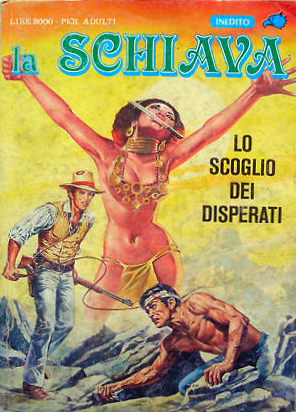
In episode No. 44, “The Cliff of Desperation,” the young woman falls object to a man who has his own concept of having a good time.
Predictably, she is tied up in bed in what appears to be a Western version of modern BDSM contexts.
Zeudia’s beauty cannot go unappreciated, especially in a comic book series from the 1970s in which every inch of exhibited flesh makes the reader happy.
For this, the beautiful protagonist is the object of vile attentions, to which she will respond with such violence that it becomes clear that she is not to be trifled with.
In episode No. 44, “The Cliff of Desperation,” the young woman falls object to a man who has his own concept of having a good time.
Predictably, she is tied up in bed in what appears to be a Western version of modern BDSM contexts.

To her surprise, her friend has a feather ready, and decides to use it to ascertain her Babinski reflexes. RIflexes that, judging by the way she tries to evade the touch, work just fine.

Zeudia points out that she does not find tickling funny at all.
The man, “unexpectedly”, shows that at the top of his priorities is not respecting the girl’s will, and retorts that his will is not in question.
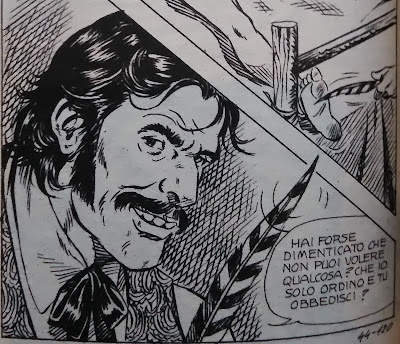
In case Zeudia likes to give an idea of herself as a composed and unemotional woman, she can set her heart at rest.
The man specifies that he purposely left her enough space to allow herself to wiggle. Apparently, he really likes to see her squirm. Judging by her expression, she, on the other hand, does not like it very much.

Although, soon after, we hear her laughing profusely.
Zeudia discovers that it is not easy to keep sullen when someone tickles you foot with a feather.
The man on the contrary appreciates the joyful atmosphere, and points out how Zeudia seems to get a kick out of it when her armpits are brushed.
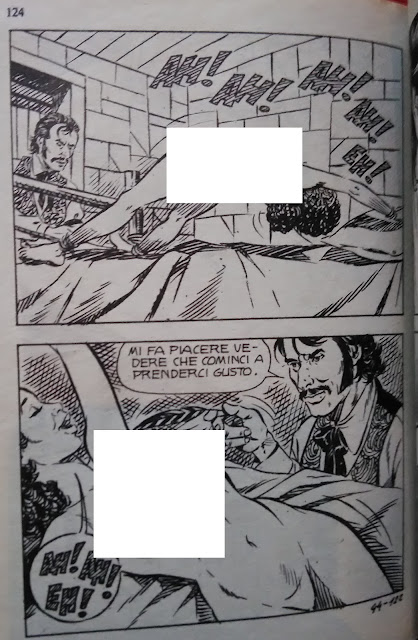
Although, those tears don’t really look like tears of happiness.
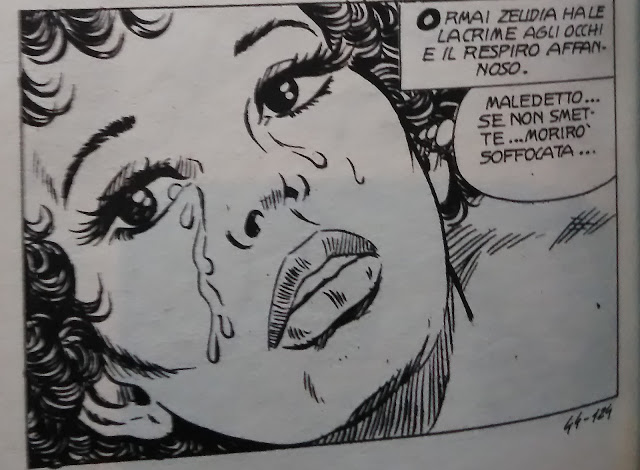
By dint of running the feather over her body here and there and watching her squirm, the man finally reaches his, er, full satisfaction.
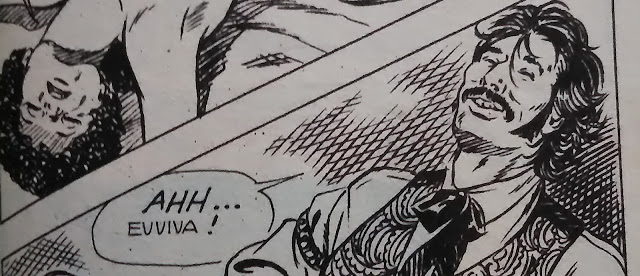
It was good while it lasted. For the decision, nine minutes.
Nine minutes of squirming with laughter that did not coincide with Zeudia’s concept of fun, judging by her expression.

